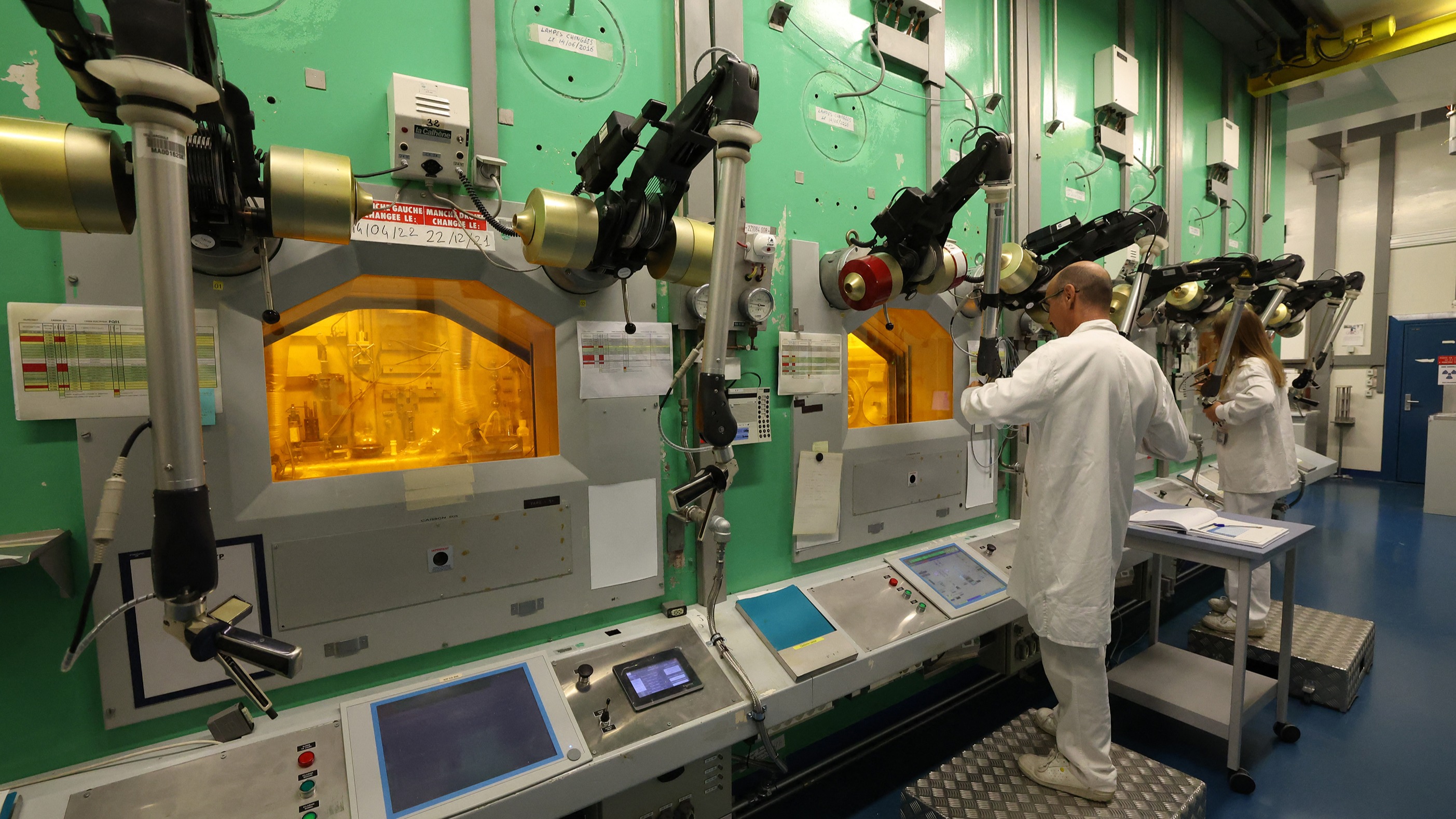Report on the World YMCA ‘Igniting Youth Futures’ Initiative and its Alignment with Sustainable Development Goals
Introduction
This report details the ‘Igniting Youth Futures’ (IYFutures) global initiative launched by World YMCA. The program is designed to connect underserved young people with meaningful employment, thereby making a significant contribution to several United Nations Sustainable Development Goals (SDGs). The initiative addresses the critical issue of youth unemployment, where 20% of individuals aged 15-29 are not in employment, education, or training (NEET), with a disproportionate impact on women and girls.
Initiative Overview and Core Objectives
Mission and Definition of Meaningful Work
The primary mission of IYFutures is to transition young people from skills training into Meaningful Work. This is defined as employment that is fair, fulfilling, and contributes positively to both individual and community wellbeing. This approach directly supports the creation of a just, sustainable, and inclusive global society.
Scope and Targets
- Phase 1 (by 2028): Support over 25,000 young people in securing future-proof jobs across India, South Africa, and Spain.
- Phase 2 (by 2030): Expand the initiative to support 100,000 young people into employment across additional countries.
Alignment with Sustainable Development Goals (SDGs)
Primary Contribution: SDG 8 (Decent Work and Economic Growth)
The IYFutures initiative is fundamentally aligned with SDG 8. By focusing on securing jobs, fostering entrepreneurship, and supporting self-employment for youth, the program directly addresses Target 8.6, which aims to substantially reduce the proportion of youth not in employment, education, or training.
Contributions to Supporting SDGs
- SDG 1 (No Poverty): By providing pathways to stable and meaningful employment, the initiative serves as a direct mechanism for poverty alleviation among young people and their communities.
- SDG 4 (Quality Education): The program’s focus on equipping youth with essential skills and career planning directly supports Target 4.4, which seeks to increase the number of youth and adults with relevant skills for employment and entrepreneurship.
- SDG 5 (Gender Equality): The initiative explicitly recognizes that most NEET youth are women and girls. By targeting underserved populations, it actively promotes economic empowerment and equal opportunities for women in the workforce.
- SDG 10 (Reduced Inequalities): The commitment to engaging “hard-to-reach, underserved youth” is a core strategy for reducing economic and social inequalities, in line with Target 10.2.
Strategic Framework and Implementation
Programmatic Approach
The initiative strengthens the pathway from education to employment through a four-pronged strategy:
- Engaging hard-to-reach, underserved youth with the mindsets required to pursue Meaningful Work.
- Equipping participants with essential skills and career planning tools to begin or redirect their work journey.
- Supporting successful transitions from training programs into employment or entrepreneurship.
- Mobilizing innovative impact finance models to ensure long-term sustainability and expand inclusion.
Multi-Sector Collaboration: SDG 17 (Partnerships for the Goals)
The IYFutures initiative exemplifies SDG 17 by building a robust partnership ecosystem. Key collaborators include:
- Accenture and the Accenture Foundation: Providing a significant grant, strategic pro bono consulting, and access to the ‘Learning to Earning’ online platform.
- Macquarie Group Foundation: Secured grant funding to support the program’s objectives.
- Impact Finance Models: The use of innovative financing mobilizes capital for projects delivering measurable social benefits, fostering collaboration with strategic partners to accelerate youth employment.
Conclusion: Fostering a Sustainable and Inclusive Future
Empowering Youth as Agents of Change
Beyond employment metrics, IYFutures aims to build resilient and empowered young people prepared to address global challenges. The program’s vision is for its participants to advance planetary sustainability and promote environmental justice within their communities, contributing to SDG 11 (Sustainable Cities and Communities) and SDG 13 (Climate Action). By transforming the youth employment ecosystem, World YMCA is investing in a generation capable of building a more just, equitable, and sustainable world.
Analysis of Sustainable Development Goals in the Article
1. Which SDGs are addressed or connected to the issues highlighted in the article?
-
SDG 8: Decent Work and Economic Growth
This is the primary SDG addressed. The article’s central theme is the “Igniting Youth Futures” (IYFutures) initiative, which aims to connect “underserved young people with Meaningful Work.” The entire program is focused on tackling youth unemployment, promoting entrepreneurship, and ensuring that the employment is “fair, fulfilling, and contributes to individual and community wellbeing,” which directly aligns with the principles of decent work and economic growth.
-
SDG 4: Quality Education
The article connects to this goal by emphasizing the need to move beyond basic training to practical skills for employment. The IYFutures program’s approach includes “equipping them with essential skills and career planning” and strengthening “the pathway from education to employment.” The partnership with Accenture provides access to its “Learning to Earning portal, a free online platform designed to help individuals build skills,” which is a clear effort to provide quality and relevant education for employment.
-
SDG 5: Gender Equality
This goal is explicitly connected when the article identifies the target demographic. It states that “20% of young people aged 15–29 not in employment, education, or training — most of them women and girls.” By specifically targeting a group where women and girls are disproportionately affected, the initiative directly works towards their economic empowerment, a key component of gender equality.
-
SDG 17: Partnerships for the Goals
The article is a clear example of this SDG in action. The IYFutures initiative is built on multi-sector collaboration. It highlights partnerships between a civil society organization (World YMCA) and the private sector (Accenture, the Accenture Foundation, and the Macquarie Group Foundation). The article concludes with an open invitation for “employers, investors, educators, and workforce development organizations to join us,” reinforcing its commitment to building strong partnerships to achieve its goals.
2. What specific targets under those SDGs can be identified based on the article’s content?
-
Targets under SDG 8 (Decent Work and Economic Growth):
- Target 8.5: “By 2030, achieve full and productive employment and decent work for all women and men, including for young people…” The article’s goal to support “100,000 young people into employment” by 2030 and its definition of “Meaningful Work” as “fair” and “fulfilling” directly corresponds to this target.
- Target 8.6: “By 2020, substantially reduce the proportion of youth not in employment, education or training.” Although the target date has passed, the issue remains critical. The article directly addresses this by citing the statistic that “20% of young people aged 15–29 not in employment, education, or training” and designing the program to tackle this specific problem.
-
Targets under SDG 4 (Quality Education):
- Target 4.4: “By 2030, substantially increase the number of youth and adults who have relevant skills, including technical and vocational skills, for employment, decent jobs and entrepreneurship.” The program’s approach to “equipping them with essential skills and career planning to start or redirect their work journey” and providing access to a skills-building portal aligns perfectly with this target.
-
Targets under SDG 5 (Gender Equality):
- Target 5.b: “Enhance the use of enabling technology… to promote the empowerment of women.” The initiative’s use of Accenture’s online “Learning to Earning portal” to provide skills to a demographic that consists mostly of “women and girls” is a direct application of this target.
-
Targets under SDG 17 (Partnerships for the Goals):
- Target 17.17: “Encourage and promote effective public, public-private and civil society partnerships…” The entire initiative is structured as a partnership between the World YMCA (civil society) and corporations like Accenture and Macquarie Group (private sector), making it a textbook example of this target.
- Target 17.3: “Mobilize additional financial resources for developing countries from multiple sources.” The article mentions securing grants from the Accenture Foundation and the Macquarie Group Foundation and embedding “innovative impact finance models” to “attract collaborative investment,” which speaks directly to mobilizing financial resources.
3. Are there any indicators mentioned or implied in the article that can be used to measure progress towards the identified targets?
-
Indicators for SDG 8:
- Implied Indicator (related to 8.5.2 – Unemployment rate): The number of young people supported into employment. The article provides concrete numbers: “25,000 young people in 3 countries… by 2028, and 100,000 in additional countries by 2030.” These figures serve as direct quantitative indicators of the program’s success in reducing youth unemployment within its target groups.
- Indicator 8.6.1: “Proportion of youth (aged 15-24 years) not in employment, education or training.” The article explicitly mentions the problem of “20% of young people aged 15–29 not in employment, education, or training.” The success of the IYFutures program can be measured by the reduction of this proportion among the communities it serves.
-
Indicators for SDG 4:
- Implied Indicator (related to 4.4.1 – Proportion of youth/adults with ICT skills): The number of young people equipped with essential skills. While not specifying the skills, the goal of securing “future-proof jobs” and using an online learning portal implies a focus on relevant, modern skills. Progress can be measured by tracking the number of participants who complete skills training through the program.
-
Indicators for SDG 17:
- Implied Indicator (related to 17.17.1 – Amount of USD committed to partnerships): The financial investment secured for the program. The article mentions that the initiative “has also secured a grant from the Macquarie Group Foundation” and support from “Accenture and the Accenture Foundation with a grant and strategic pro bono consulting services.” The total value of these grants and services is a clear indicator of the financial commitment to this partnership.
4. Summary Table of SDGs, Targets, and Indicators
| SDGs | Targets | Indicators |
|---|---|---|
| SDG 8: Decent Work and Economic Growth |
|
|
| SDG 4: Quality Education |
|
|
| SDG 5: Gender Equality |
|
|
| SDG 17: Partnerships for the Goals |
|
|
Source: natlawreview.com







